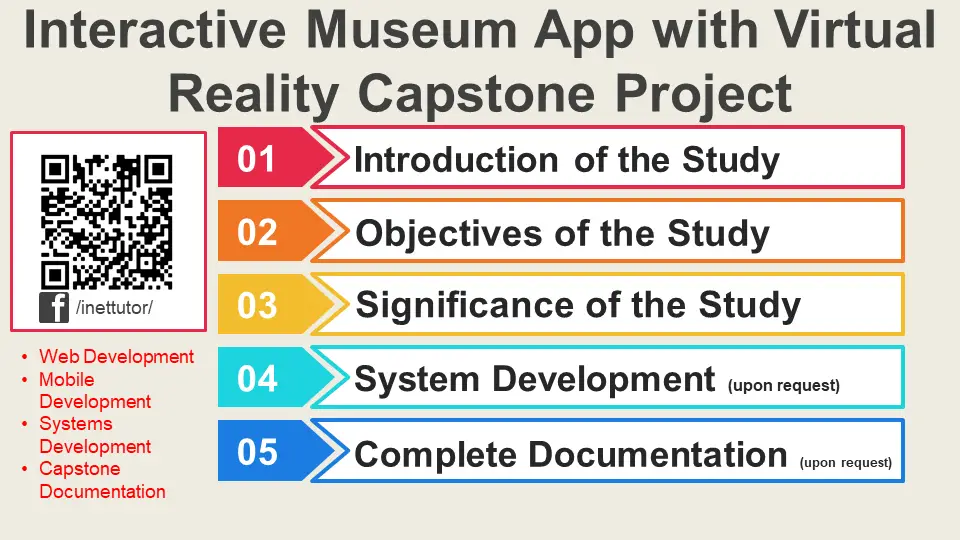Interactive Museum App with Virtual Reality Capstone Project
Table of Contents
Introduction of the Study
The “Interactive Museum App with Virtual Reality”, a capstone project, allows users to view high-resolution images and videos of artworks and cultural objects from museums. The application includes virtual reality (VR) experiences that enable visitors to better understand and contextualize objects, scenes, and stories.
The main purpose of a museum is to display and exhibit object, culture, education, ideas and other valuable assets. The conventional way of doing exhibit in museums may encounter limitations and practical obstacles. Traditional museum exhibits are only limited in having showrooms as a platform for audiences to view the original artworks. Due to various constraints such as exhibition space, venues and schedules there are only few engagements with the audiences.

Proposed Solution
To address the limitations mentioned above, the researchers of the study aim to design and develop an Interactive Museum App with Virtual Reality. The application is a platform that uses virtual reality which allows users to experience a virtual museum exhibits without limitations in space, venues and schedules. The application will allow audiences to bring objects, scenes and stories to life. This often makes it easier for visitors to understand valuable assets and put them in context found in museums. The application is a good alternative in experiencing the beauty of museum collections.
Objective of the Study
General Objective- the main objective of the project is to design and develop an Interactive Museum App with virtual reality as an alternative to traditional museum experience during exhibits.
Specifically, the project aims the following objectives:
- To design and develop an application that will eliminate the location and time constraints in experiencing museum tours.
- The application will bring museum collection in to life through virtual reality.
- To develop a program that will serve as an alternative in visiting museums.
- The application will let users understand more an art piece by letting them experience it and providing more information about the art.
- The app is accessible and available for users.
- Evaluate the performance of the system using the ISO 25010 criteria for quality software.
- Evaluate the output of the project using a standard questionnaire. The application will be evaluated on the following characteristics:
- Functionality
- Reliability
- Usability
- Efficiency
- Maintainability
- Portability
Significance of the Study
The success of the project is deemed beneficial to the following individuals or group:
End-users. The end-users of the application are probably those who are fond of experiencing the beauty of museums. The project will provide them another platform in understanding more the different collections found in museums.
Museum Management. The application will help them display exhibits without a lot of limitations and constraints. This will help them effectively market their museum.
Researchers. The success of the study will contribute to their knowledge and skills as programmers.
Future Researchers. They can use this study as a baseline for their own version of interactive museum application.
Development Tools of the project
By definition, virtual reality or is a simulated experience that can be similar to or completely different from the real world. Applications of virtual reality include entertainment (e.g. video games), education (e.g. medical or military training) and business (e.g. virtual meetings). (https://en.wikipedia.org/wiki/Virtual_reality)
In this case, the researchers used the VR technology to enhance the experience of visitor by adding simulated 3D models to the resources of the museum.
You may visit our facebook page for more information, inquiries and comments.
Hire our team to do the project.


